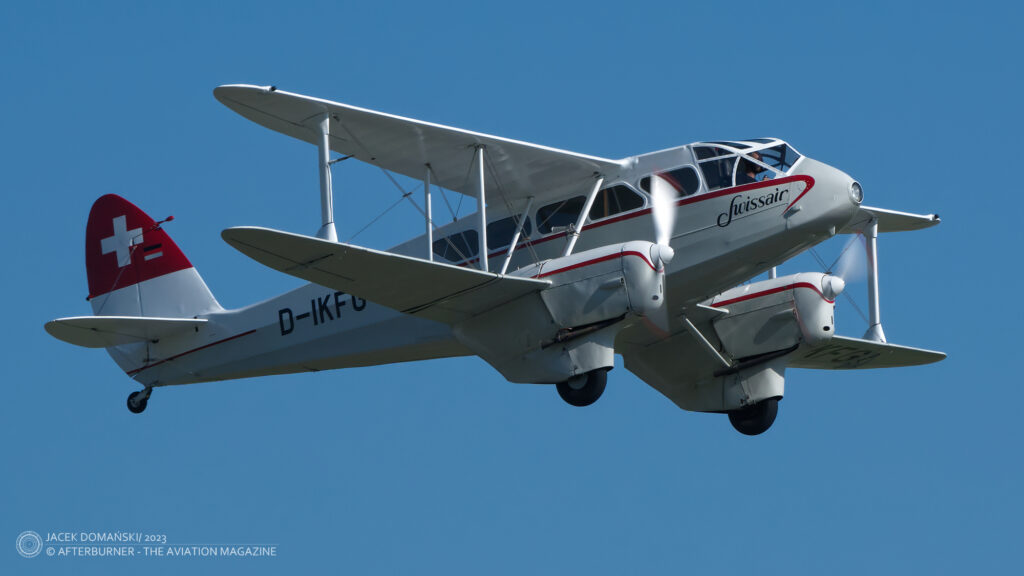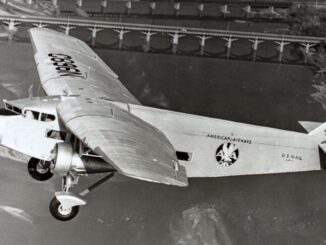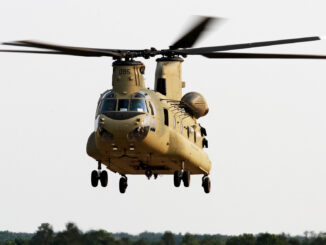 De Havilland DH.89A Dragon Rapide (c/n 6853, D-IKFG, formerly ´NR777´ of the Royal Air Force and ´D-7´ of the Belgian Air Force), flying display at Medieval Mini Tiger Meet 2023, Neuburg a.d. Donau, July 2023.
De Havilland DH.89A Dragon Rapide (c/n 6853, D-IKFG, formerly ´NR777´ of the Royal Air Force and ´D-7´ of the Belgian Air Force), flying display at Medieval Mini Tiger Meet 2023, Neuburg a.d. Donau, July 2023.
The story of de Havilland small/medium passenger aircraft began in 1932, with the first flight of DH.83 Fox Moth. It was a single-engine biplane, powered by de Havilland Gipsy Major I four-cylinder piston engine and capable of carrying up to four passengers and a pilot.
The Fox Moth quickly gained popularity, being widely used in the Commonwealth countries. It was the aircraft that started the Australian National Airways passenger service, was used by QANTAS on the Flying Doctor Service and finally became a well-liked bush aeroplane.
Shortly after introduction of the DH.83 into commercial service, one of its initial operators, Hillman´s Airways, asked the de Havilland company to develop a larger, twin-engine variant of the Fox Moth.
The manufacturer met the expectations and, at the end of the year, presented a simple airliner, made of plywood and powered by two Gipsy Major I engines. The aeroplane was officially designated DH.84 Dragon Moth – however commonly called just a Dragon – and made its first flight on 12th November 1932.
In April of the next year, the first four DH.84s began their operational service with Hillman´s Airways. The aeroplane was well welcomed by the market and, in total, more than two hundred examples were built.
In the same year of 1933, the de Havilland company introduced another airliner into the market, based on the previous designs. The aeroplane was designated DH.86 Express and was a four-engine medium passenger aircraft, capable of carrying up to 16 passengers. The aeroplane was primarily made for recently established Empire Air Mail Service airline that was intended to provide passenger and cargo flights between Singapore and Tasmania.
The DH.86 was powered by four six-cylinder, air-cooled inverted inline piston engines, developed from the well-known Gipsy Major. It did not take long to emergence of an idea of combining the advantages of both airliners, the DH.84 and the DH.86.
Works on the new aircraft began in late 1933 and were led by de Havilland aircraft designer, Arthur Ernest Hagg. The new aeroplane performed its maiden flight on 17th April 1934 and initially received an official designation DH.89 Dragon Six.
Although silhouette of the airliner was quite similar to the DH.84 Dragon, from a technical standpoint the Dragon six was a smaller, twin-engine variant of the DH.86 Express. It shared the plywood construction with tapered wings – that was common for the de Havilland passenger aircraft from the early 1930s – but was faster and more comfortable than its predecessors.
Moreover, and fortunately for the manufacturer, the DH.89 turned out to be more reliable than the DH.86 and free from technical difficulties that haunted the Express. The four-engine airliner suffered from issues with directional stability and overall construction strength. It finally led to a series of fatal accidents and then to suspension of certificate of airworthiness for the DH.86 Express by the Australian government.
In the mid-1934, the DH.89 began its commercial service, one more time with Hillman´s Airways as the first operator. The second operator was Anglo-Persian Oil Company that issued a good efficiency report on the aircraft and caused the DH.89 quickly became very popular in the oil industry.
In the meantime, the manufacturer changed the aircraft name and began to advertise it as Dragon Rapide. It was quickly commonly shortened to just Rapide.
Until the outbreak of the World War II, the Dragon Rapide became a popular small, short-haul airliner, used mainly by operators from the United Kingdom and other Commonwealth countries. One of the DH.89s was acquired by Edward, Prince of Wales and used within his royal duties. When, in 1936, Edward took the throne and became Edward VIII, the King of the United Kingdom, he did not stop using his Dragon Rapide, thus being the first British king to fly an aircraft.
During the war, majority of civilian DH.89s were taken over by the Royal Air Force and the Royal Navy. The armed forces adopted new name for the aircraft – de Havilland Dominie – and used the DH.89 as liaison and passenger aeroplane, as well as for radio and navigation training purposes. In addition, production of militarized variants was launched and included the DH.89M military transport aircraft, DH.89B Dominie Mk I training and Dominie Mk II communications variants.
In 1946, production of the DH.89 was ceased, after manufacturing more than 700 examples of the aircraft. Most of the surviving aeroplanes from the RAF and the RN service were sold to civilian operators and airlines, although a few of them were acquired by the foreign armed forces.
The DH.89 remained in civil and military service until the mid-1960. The last Dominie was retired from the Royal Navy in 1963 and most of the airlines withdrew their Dragon Rapides from commercial service by 1966. Nevertheless, many of them were then taken over by private users and remained airworthy until today.
The aeroplane ´6853´ featured within our Photo of the Week series was manufactured in 1942 as DH.89A and was initially operated by the RAF as ´NR777´. In 1946, the aircraft was acquired by the Belgian Air Force and taken on strength with ´D-7´ tactical number. The DH.89 remained in active service in Belgium to the late 1950s and then it was retired and stored.
In the 1980s, fuselage of the ´6853´ was discovered and sold to the United Kingdom and then to New Zealand. There, the aeroplane was restored to flying condition by Croydon Aircraft Company and registered ZK-SWR.
In the following, the DH.89 was sold to Switzerland, then received a Swissair livery and next sold to Germany, where it stays until today. In 2016, registration of the ´6853´ was changed to D-IKFG.


